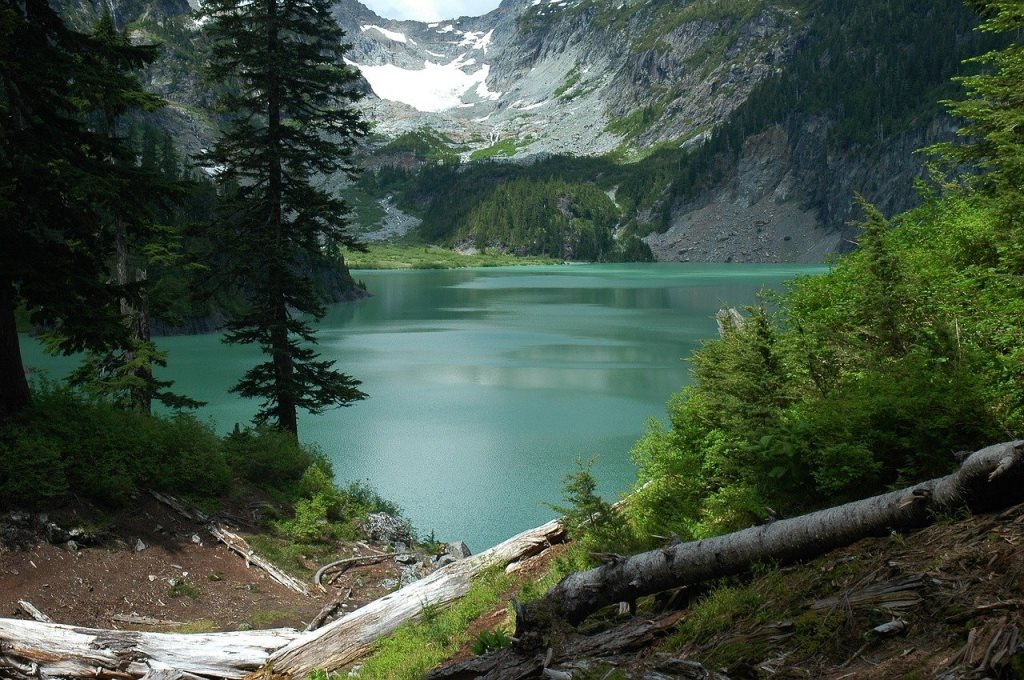Climate change threatens the productivity of Washington state’s farms, forests and communities, but there are steps that can be taken to minimize those threats and create new opportunities in making the state more resilient, according to a new report released on February 20, 2020 by the Washington State Department of Natural Resources (DNR).
“The potential impacts of climate change can seem dire, but the consequences for our natural systems, economies, and local communities don’t have to be. The sooner we collectively act to plan for and manage climate risks, the better prepared we will all be,” says Dr. Crystal Raymond, Climate Adaptation Specialist at the University of Washington Climate Impacts Group.
Commissioner of Public Lands Hilary Franz unveiled the agency’s Plan for Climate Resilience, which details the threats climate change poses for the state and recommendations for mitigating them, at a press conference Thursday, alongside climate scientists, legislators and local officials.
“Across the state, we are seeing and feeling the impacts of climate change,” said Commissioner Franz, head of DNR. “Wildfire and smoke threaten public health. Orca and salmon runs are in decline. Communities are confronting flooding, water shortages, and drought. As stewards and beneficiaries of our lands and waters, we need to take action now. This plan is our blueprint for the future – our enduring commitment that our children and grandchildren will be able to benefit from Washington’s forests, farms and waters like we have.”
Over the last several years, Washington’s communities have seen increases in the severity of wildfires, floods, and drought, which negatively affect our economy and health. At the same time, wildlife like orcas and salmon have decreased as their habitat has declined in quality.
“Climate resilience for Chelan County means addressing forest health and the uncharacteristic wildfires we are seeing. And it also means helping us put plans in place for having enough water to go around for irrigation and in-stream flows in drought years. We need to collaborate and we need to prepare, and in the county, DNR has been a partner in moving this forward,” said Chelan County Commissioner Doug England.
Building Communities by Building Resilience
Under Commissioner Franz’s leadership, DNR officials worked with science, policy and business leaders to assess the threats climate change poses and recommend ways to build resilience to minimize those impacts and maximize new opportunities.
“Increasing resilience to climate change is vital for communities and tribes in Puget Sound and along Washington’s coast. Our communities are facing increasing floods from more intense precipitation, and our shellfish and salmon are suffering from warming waters in rivers, loss of habitat, changing ocean acidity and ocean temperature. We appreciate DNR’s leadership in articulating responses. It’s critical that we build our capacity and work together,” explained Rep. Debra Lekanoff, D-Bow, 40th District.
The Plan for Climate Resilience assesses the challenges and opportunities presented by climate change, and lays out achievable steps to make Washington’s natural landscapes, and the communities they support, more resilient and productive. Among them:
- Increase the use of state lands for renewable energy to lessen carbon emissions and increase revenue for trust beneficiaries;
- Restore the health of eastern Washington forests to limit the size and damage of wildfires and provide new work in the timber industry;
- Reforest with tree varieties that can withstand changing climate regimes;
- Restore eelgrass beds to provide localized refuges for shellfish in acidifying marine waters;
- Strengthen roads and trails to withstand increased flooding and precipitation; and
- Launch and urban forestry strike team to plant more trees in towns and cities to capture stormwater and lower temperatures.
Building a More Resilient DNR
The Plan for Climate Resilience also lays out steps DNR will take to lessen the agency’s carbon footprint and ensure Washington’s public lands are managed with climate change in mind.
“The climate crisis is a clear threat to our way of life, impacting our health, our livelihoods and our economy. DNR’s climate resilience plan acknowledges this pivotal opportunity to address our wildfire and forest health crisis, protect our most vulnerable neighbors and act with the urgency the crisis demands,” said Mike Stevens, Washington state director for The Nature Conservancy.
To implement the plan at DNR, Commissioner Franz issued a Commissioner’s Order directing agency leadership and staff to take all practicable steps to incorporate climate change considerations into relevant decisions, policies, procedures, and operations including, where relevant, into legal, policy, and guidance documents.
Over the next several months, DNR will hold community conversations throughout the state to discuss how to implement the actions in the plan in ways that are just and equitable.
“At Taylor Shellfish, our business depends on a healthy marine ecosystem. We have seen firsthand the impacts of ocean acidification resulting from carbon pollution. Working together in Washington to create tools that allow us to be resilient in the face of these increasingly ominous threats is essential to the future of our shellfish. DNR’s leadership and commitment through this new plan is a crucial element of responding to the effects of climate change,” said Bill Dewey of Taylor Shellfish.

